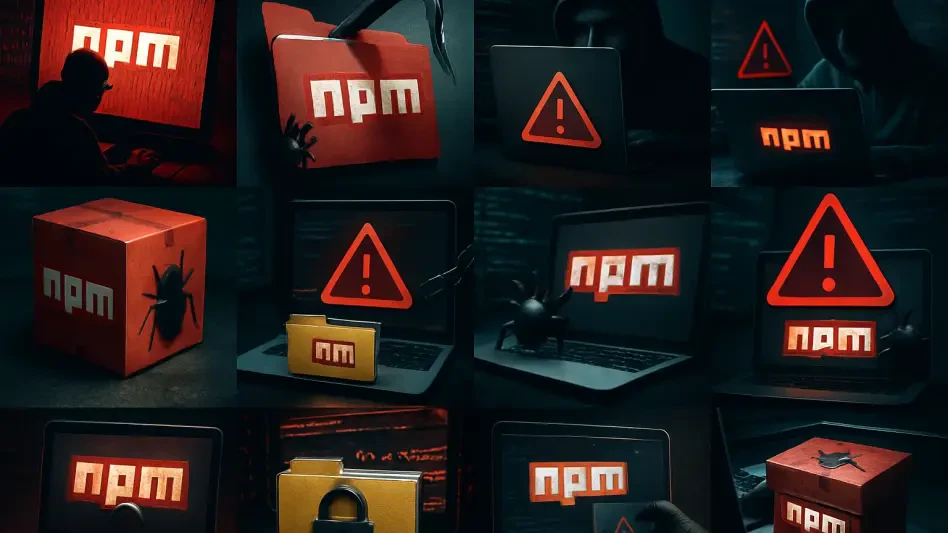In a startling revelation that has sent shockwaves through the software development community, a widely used npm package, eslint-config-prettier, with over 3.5 billion downloads and 36 million weekly installations, was compromised in a sophisticated phishing attack on July 18. This incident, detected swiftly by automated systems and research teams, exposed the fragility of trust in open-source ecosystems. The breach involved the publication of malicious versions of the package and related tools like eslint-plugin-prettier and synckit, which deployed a dangerous remote access Trojan on Windows systems. Although the tainted versions were available for less than two hours, the potential for widespread damage was immense due to the package’s massive user base. This event serves as a grim reminder of how quickly a single point of failure can ripple through the interconnected web of software dependencies, highlighting the urgent need for robust security measures in modern development practices.
Unveiling the Phishing Attack
The phishing campaign that led to the compromise of eslint-config-prettier was a meticulously crafted operation, employing spoofed emails that mimicked the official npm support address to deceive the package maintainer. These emails directed victims to a fraudulent site via tokenized URLs, a tactic indicative of a highly targeted approach. Once credentials were stolen, attackers wasted no time in releasing infected versions of the package, exploiting the inherent trust developers place in such widely adopted tools. The malicious script embedded in these versions was designed to infiltrate systems, posing a severe threat to unsuspecting users. This breach underscores the vulnerability of even the most trusted components in the software supply chain, where a single lapse can open the door to catastrophic consequences. The speed and precision of the attack reveal a growing sophistication among cybercriminals, who are increasingly focusing on open-source repositories as entry points for broader system infiltration.
Beyond the technical details of the phishing attack, the incident exposed deeper systemic issues in dependency management within the development community. Over 14,000 projects listed eslint-config-prettier as a direct dependency rather than a devDependency, significantly increasing the risk of downstream compromises. This misconfiguration meant that malicious code could propagate into production environments more easily than anticipated. The brief window of exposure—less than two hours—was still enough to affect numerous projects, with automated systems identifying 46 repositories that installed the compromised version during that time. Such rapid spread illustrates how even fleeting vulnerabilities can have outsized impacts in a landscape where software dependencies are deeply interconnected. The incident calls into question the balance between convenience and caution, urging developers to reassess how dependencies are categorized and managed to prevent similar breaches from cascading through critical systems.
Automation’s Double-Edged Sword
A critical factor that amplified the impact of this breach was the role of automated update tools, such as GitHub’s Dependabot, which can refresh dependencies without manual oversight. While these tools are designed to keep software up-to-date and secure by addressing outdated code, they inadvertently facilitated the spread of malicious versions in this case. Several repositories, including one managed by a European e-bike company and another tied to a major tech corporation, pulled in the tainted packages automatically, exposing their systems to risk. Although platforms like GitHub offer some mitigation through hosted runners, organizations using self-hosted runners faced heightened dangers. This incident highlights the dual nature of automation in software development: it streamlines processes and reduces human error, yet it can also act as a conduit for threats when malicious updates slip through unchecked. The reliance on such tools demands a reevaluation of how updates are vetted and applied.
The broader implications of automation in dependency updates point to a pressing need for stricter controls and oversight. Developers often prioritize efficiency, allowing automated systems to handle routine tasks like package updates, but this breach demonstrates the peril of unmonitored integration. The speed at which malicious code propagated through automated pull requests serves as a cautionary tale about the risks of bypassing human review. To mitigate such threats, delaying non-critical updates to allow time for detecting anomalies and ensuring manual scrutiny of automated changes are practical steps that can bolster security. Additionally, configuring build workflows to avoid unnecessary installations in production environments can limit exposure. This incident reveals that while automation is indispensable in modern development, it must be paired with vigilant practices to prevent it from becoming a liability in the face of increasingly sophisticated supply chain attacks.
Strengthening Defenses Against Supply Chain Threats
Reflecting on the eslint-config-prettier breach, it became evident that this was not a standalone event but part of a disturbing pattern of escalating supply chain attacks targeting open-source software. The incident laid bare the vulnerabilities inherent in dependency management and the rapid propagation of threats through automated systems. Attackers exploited the trust and interconnectivity of these ecosystems, turning trusted tools into vectors for malicious intent. The scale of potential damage, even within a narrow window of exposure, underscored the fragility of current practices. This breach served as a stark warning to the development community, emphasizing that prioritizing convenience over security could lead to devastating outcomes. It highlighted the necessity for a cultural shift toward proactive vigilance in safeguarding software supply chains against ever-evolving cyber threats.
Looking back, the response to this compromise offered valuable lessons for fortifying defenses. Recommendations that emerged included adopting a cautious approach to dependency updates by implementing delays for non-critical patches, ensuring clear separation between dependencies and devDependencies, and enforcing manual reviews before merging automated pull requests. These measures aimed to reduce the risk of malicious code slipping into production environments. The incident also sparked discussions on fostering greater awareness and collaboration within the community to address systemic risks. By integrating stricter controls and cultivating a mindset of caution, developers could better protect against future breaches. This breach ultimately acted as a catalyst for rethinking security strategies, pushing for comprehensive solutions to shield open-source ecosystems from the sophisticated threats that continue to target them.








